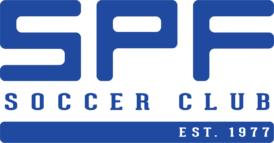Concussion Protocol
Concussion: a traumatic brain injury that interferes with normal brain function. Medically, a concussion is a complex, pathophysiological event to the brain that is induced by trauma which may or may not involve a loss of consciousness (LOC). Concussion results in a constellation of physical, cognitive, emotional, and sleep-related symptoms. Signs or symptoms may last from several minutes to days, weeks, months or even longer in some cases.
CONCUSSION SIGNS, SYMPTOMS, AND MANAGEMENT AT TRAINING AND COMPETITIONS
Step 1: Did a concussion occur?
Evaluate the player and note if any of the following signs and/or symptoms are present:
- Dazed look or confusion about what happened.
- Memory difficulties.
- Neck pain, headaches, nausea, vomiting, double vision, blurriness, ringing noise or sensitive to sounds.
- Short attention span. Can’t keep focused.
- Slow reaction time, slurred speech, bodily movements are lagging, fatigue, and slowly
- Answer questions or has difficulty answering questions.
- Abnormal physical and/or mental behavior.
- Coordination skills are behind, ex: balancing, dizziness, clumsiness, reaction time.
Step 2: Is emergency treatment needed?
This would include the following scenarios:
- Spine or neck injury or pain.
- Behavior patterns change, unable to recognize people/places, less responsive than usual.
- Loss of consciousness.
- Headaches that worsen
- Seizures
- Very drowsy, can't be awakened
- Repeated vomiting
- Increasing confusion or irritability
- Weakness, numbness in arms and legs
Step 3: If a possible concussion occurred, but no emergency treatment is needed, what should be done now?
Focus on these areas every 5-10 min for the next 1 - 2 hours, without returning to any activities:
- Balance, movement.
- Speech.
- Memory, instructions, and responses.
- Attention on topics, details, confusion, ability to concentrate.
- State of consciousness
- Mood, behavior, and personality
- Headache or “pressure” in head
- Nausea or vomiting
- Sensitivity to light and noise
Step 4: A player diagnosed with a possible concussion may return to play in a NJYS Event only after release from a medical doctor or doctor of osteopathy specializing in concussion treatment and management.
Step 5: If there is a possibility of a concussion, do the following:
- The attached Concussion Notification Form is to be filled out in duplicate and signed by a team official of the player’s team.
- If the player can do so, have the player sign and date the Form. If the player is not able to sign, note on the player’s signature line “unavailable”.
- If a parent/legal guardian of the player is present, have the parent/legal guardian sign and date the Form, and give the parent/legal guardian one of the copies of the completed Form. If the parent/legal guardian is not present, then the team official is responsible for notifying the parent/legal guardian ASAP by phone or email and then submitting the Form to the parent/legal guardian by email or mail. When the parent/legal guardian is not present, the team official must make a record of how and when the parent/legal guardian was notified. The notification will include a request for the parent/legal guardian to provide confirmation and completion of the Concussion Notification Form whether in writing or electronically.
- The team official must also get the player’s pass from the referee and attach it to the copy of the Form retained by the team.
NJYS Concussion Protocol Jan 26 2018
References:
Kissick MD, James and Karen M. Johnston MD, PhD. “Return to Play After Concussion.” Collegiate Sports Medical Foundation. Volume 15, Number 6, November 2005. http://www.csmfoundation.org/Kissick_- _return_to_play_after_concussion_-_CJSM_2005.pdf. April 22, 2011.
National Federation of State High School Associations. “Suggested Guidelines for Management of Concussion in Sports”. 2008 NFHS Sports Medicine Handbook (Third Edition). 2008 77-82. http://www.nfhs.org. April 21, 2011. -2- Possible Concussion Notification for New Jersey Youth Soccer
